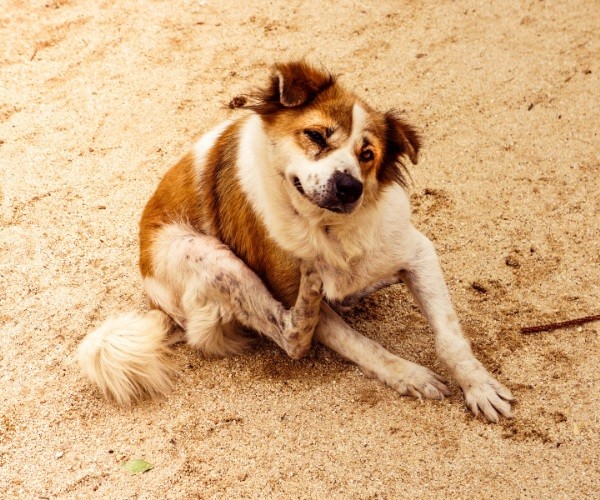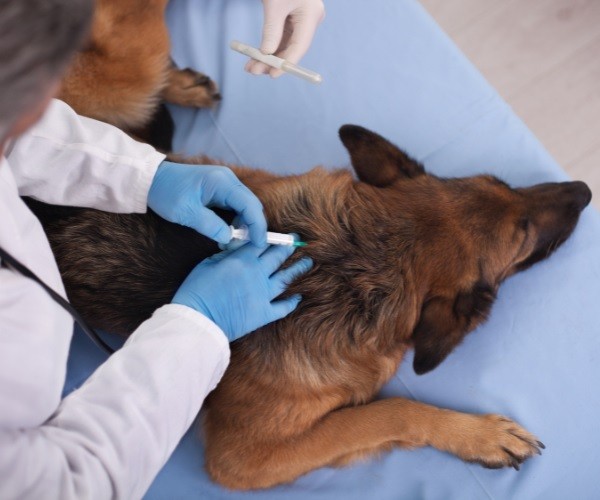As a dog lover, taking your pet for a regular checkup at the vet must be part of your routine. That gives you a chance to catch whatever disease your dog is suffering from quickly. Some diseases come up with symptoms immediately while others may take longer.
What is Cushing’s Disease in Dogs?

Cushing’s disease in simple terms refers to a condition whereby your dog produces excess cortisol which is secreted from the adrenal glands. In normal amounts, cortisol is crucial for your dog’s health as it helps to keep your dog healthy and fit, prevents infections and also keeps the blood sugar levels normal.
Possible causes of Cushing’s disease
A small benign tumor of the pituitary gland
When your dog has a tumor in the pituitary gland, it causes the overproduction of ACTH. The tumor triggers the pituitary glands to produce too much cortisone.
A tumor in the adrenal gland
Cushing’s disease can also be caused by a tumor growing in the adrenal gland. Although, this cause is less common than that of a tumor in the pituitary gland.
Excess use of steroids
If your vet is always prescribing steroids for your dog, it can cause a malfunction in the adrenal or pituitary gland and end up in Cushing’s disease. That should only happen with vets who have little or no experience, so the incidence is quite rare.
Symptoms of Cushing’s disease

These are symptoms to look out for to determine whether your dog is suffering from Cushing’s disease:
#1. Excess water intake
You must have had an idea of how your dog usually takes water. You may now need to fill your dog’s watering bowl like twice a day depending on how big it is. So, if you notice that your dog keeps gulping up water without any physically exerting activity, it could be a sign of Cushing’s disease.
#2. Increased hunger
Most dog owners have a feeding schedule, and most grown-up dogs are only fed once a day. Thus, if you notice your dog always begging for a snack or kicking its food bowl at non-feeding times every day, it might be time to test for Cushing’s disease.
#3. Hair loss
Furry species of dogs such as poodles tend to lose some hair normally, but you should be able to differentiate when the hair loss is in excess. Hair loss in dogs is an indicator of something not going well on the inside. That could be a pointer to Cushing’s disease in dogs.
Here we write 5 Quick and Easy Ways to Remove Pet Hairs; you may be interested in reading.
#4. Frequent urination
If your dog starts peeing multiple times in a day, it is not normal and should be checked out. That could also mean that a dog that has been ‘toilet-trained’ might soil living spaces, a habit it has never shown before.
#5. Big abdomen
It might first look like your dog is getting fat, but it is not. The swollen belly is a strong symptom of Cushing’s disease and should not be ignored.
#6. Fatigue
Your once active dog that is always rearing to go on walks would just want to lie around and sleep all day.
#7. Muscle wasting
Muscle wasting is usually easy to notice because even as the food intake of your dog has increased, it does not reflect in the muscle gain. Instead, your dog would look slightly lean apart from the protruded belly.
Testing for Cushing’s disease
The tests to find out whether your dog has Cushing’s disease are not easily determined. That is why it is essential for you to pay attention to the symptoms. The vet would be testing your dog’s urine and blood to find any abnormalities.
An ultrasound to check the abdomen can also be performed and a chest x-ray. When it has been determined that your dog has Cushing’s disease, a course of treatment has to be decided upon and started immediately.
Treatment of Cushing’s disease

Treatment is given according to the type of Cushing’s disease your dog is suffering from:
- Mild pituitary related: Your dog would not require medication at this point as it may just go away on its own. You would be advised to monitor your dog carefully for any worsening symptoms.
- Acute/chronic pituitary related: This is for dogs already showing most of the symptoms highlighted above. They will need to be placed on medication that helps to suppress the way their body produces cortisol. The two common oral medications often prescribed are mitotane and trilostane. Your dog may have to remain on this medication for life.
- Adrenal-related: With the presence of a tumor whether benign or malignant, the treatment is a bit different. The same hormone-reducing medications are prescribed to help the tumor reduce in size before surgery. However, for a cancerous tumor, the medication might help the dog improve for a few months before a fatality occurs. If the tumor is benign, it can be removed surgically, and your dog can make a full recovery.
Important guidelines
- It is very crucial to monitor your dog closely during the treatment course because the medications used tend to have serious side effects.
- It would help if you restricted your dog’s movements by keeping them on a shorter leash, so they don’t strain or exert themselves. That is more important if your dog had surgery as part of the treatment for Cushing’s disease.
- Do not miss the postoperative checks that can go on for as long as 6 months after the surgery. Keeping to the inspections will determine how well your dog will recover.
Conclusion
It would help if you remembered that Cushing’s disease in dogs is usually challenging to diagnose and your vet may not identify it even after you insist on having noticed some symptoms. It might be a great idea to get a second opinion if you think your veterinarian may be wrong.
Treating Cushing’s disease in dogs can be pretty expensive, and you should not feel bad if you cannot afford the treatment. Instead, focus on not letting your dog linger in pain for too long. Some dogs who are treated never recover due to the severe side effects. Another essential article we write about is Lyme Disease in Dogs – Symptoms, Treatment & Guidelines.
DON’T MISS
- What to Consider When Looking into Pet Carpet Cleaning
- How To Choose A Wireless Dog Fence [Ultimate Guide]
- 5 Simple Tips To Lower Hot Spot Discomfort On Dogs
Last Updated on January 14, 2025 by Pauline G. Carter

